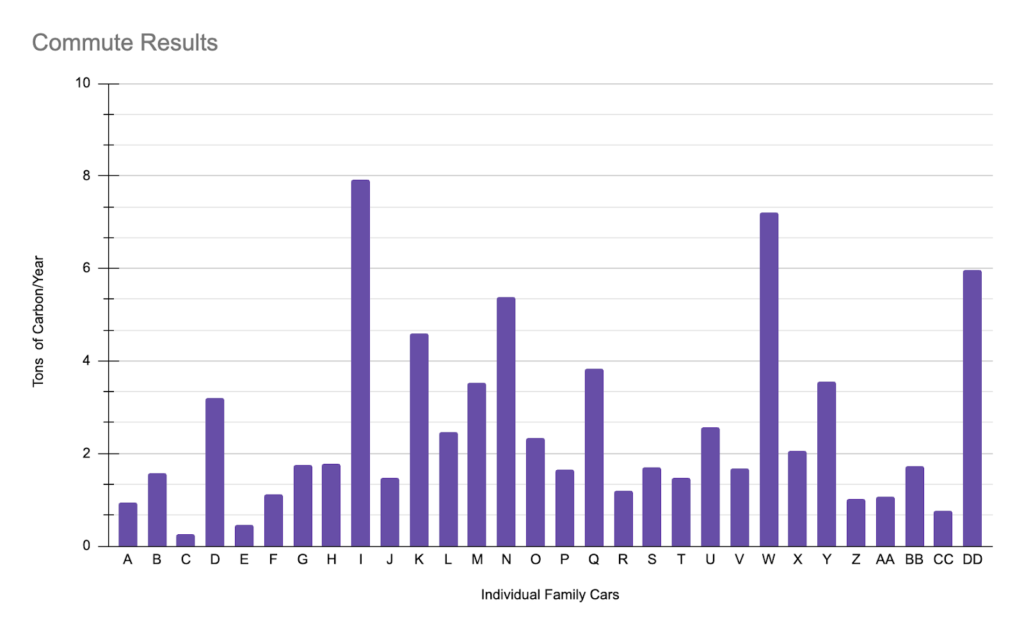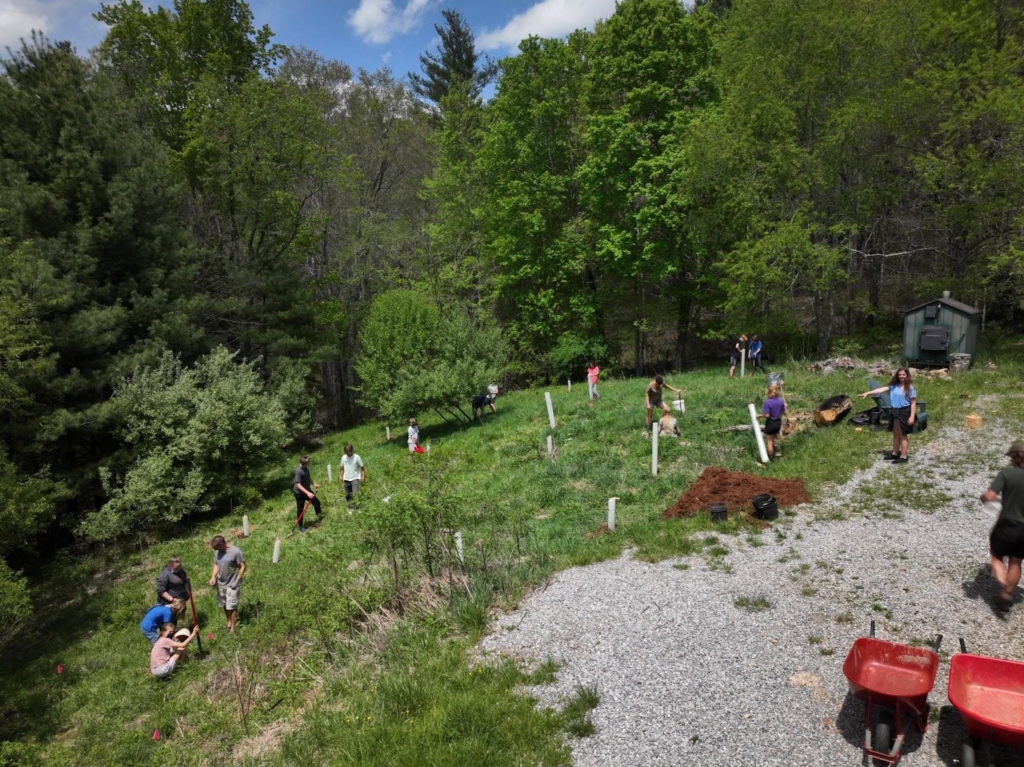It was important for us to offset our carbon usage for the year. If this level of accountability is what we want from major corporations and governments, then we must also practice it.
Sarah Merfeld, Director of Programs at Springhouse
“The eyes of the future are looking back at us and they are praying for us to see beyond our own time. They are kneeling with hands clasped that we might act with restraint, that we might leave room for the life that is destined to come. To protect what is wild is to protect what is gentle. Perhaps the wilderness we fear is the pause between our own heartbeats, the silent space that says we live only by grace. Wilderness lives by this same grace. Wild mercy is in our hands.” — Terry Tempest Williams
When I read the UN Climate Reports last summer, I was scared. Then, I was angry. If the report is saying it’s now or never to intervene to prevent catastrophic warming effects, then why weren’t we doing more? I felt angry at people in power for not taking drastic action and angry at all of us for carrying on with “business as usual.”
Then I remembered Gandhi and his famous line, “Be the change you wish to see in the world.” I realized that I needed to start with myself and take a closer look at how I am contributing to climate change. I am also in a position of power at Springhouse, so I have a real opportunity and responsibility to make a difference. If I wanted policymakers and government officials to take this seriously, I needed to as well.
Carbon Project
This awakening fueled a year-long project that I undertook with a 15-year-old Springhouse student, Jarrah Callister, who has a deep love for the Earth, a passion to take care of it, and the skills to take action.
Although there are a myriad of entry points to work towards sustainability and Earth stewardship, we focused on carbon emissions and the problem of global warming.
Together, we sought to calculate and offset Springhouse’s carbon use for the year. We began by trying several online business carbon footprint calculators. Quickly, neither of us were satisfied with the accuracy or usefulness of these tools. So, we began to create our own calculator that we could tailor to our school’s needs.
Most of this was pretty straightforward. The largest part of the project was calculating the carbon burned through our collective commute to and from Springhouse. We surveyed the community and put together a detailed tool that took into consideration the miles traveled, the cars’ MPG, diesel vs. gas, carpooling, etc. Once the results were in, we facilitated a guessing game in which students guessed how much carbon their commute generated (see image below). It was important to us to include the community in the process, as our goal was not only to offset our carbon but also to bring awareness to how our actions impact the Earth.

We estimated that Springhouse emitted 108 tons of carbon this year. The vast majority of our total impact was made during our commute to and from the school. We live in a rural area where we do not have public transportation and bike commuting is dangerous on winding, gravel roads. We hope that if we have a greater focus on carpooling (which has been difficult during the pandemic), we can reduce our emissions in the future. Further, we hope to switch to solar energy and change our heating system, which would greatly reduce our usage of both propane and coal-powered electricity.

It was important for us to offset our carbon usage for the year. If this level of accountability is what we want from major corporations and governments, then we must also practice it. Enter our tree planting project!
Tree Planting
I had the idea to plant trees on our campus to offset our carbon usage. Often when you buy carbon credits to become carbon neutral, they fund a reforestation effort somewhere else. So, why not just do it ourselves in our own place?
Planting trees has other ecological benefits as well. Clear-cut logging is an environmental problem in our region. This practice leads to loss of biodiversity, destruction of wildlife habitat, soil erosion, and more. So planting trees is a win-win!
We estimated, on average, one tree will sequester one ton of carbon in 40 years, so we needed to plant 108 trees. Earlier in the year, I received a grant from the Loretto Community’s Carbon Offset Fund that allowed us to purchase 75 native saplings, as well as other materials needed. We had a big tree planting day and were joined by two local elementary schools. Jarrah explained the project to these younger students, and this became another rich learning opportunity.
To be in service to a regenerative culture is to be committed to re-growing and re-building a culture that is connected to and takes care of the life-force in ourselves, one another, and Earth.
Sarah Merfeld, Director of Programs at Springhouse
We also received enough seeds from local Black Walnut trees from a neighboring forester to offset the other 33 tons of carbon.
Unfortunately, the squirrels in our woods had other plans. Every time we planted the nuts, the squirrels dug them up. We even sprinkled coffee grounds on top of the holes to thwart them to no avail. Alas, we settled for offsetting 70% of our carbon emissions this year.
Jarrah and I hope to continue this project in the future by calculating our carbon use for the year and offsetting it by planting trees. Next time, we would like to partner with a community member who owns land that was recently logged. We would plant the trees on their land if they agree to water and care for them in subsequent years. This way we can spread awareness of our project while continuing to re-forest our county.
The Eyes of the Future
As Terry Tempest Williams writes, “The eyes of the future are looking back at us and they are praying for us to see beyond our own time. They are kneeling with hands clasped that we might act with restraint, that we might leave room for the life that is destined to come.” It is our collective responsibility to care for what we’ve been given and think beyond ourselves.
Here’s what Jarrah (15 years old) told the elementary school students who helped us plant the trees: “Planting trees is a great way to practice thinking beyond yourself. Trees take a long time to grow and so we likely won’t enjoy them. Climate change will be a multi-generational issue, and we need to do what we can now and trust others will follow in our footsteps.”
At Springhouse, our focus is building a regenerative culture. A regenerative culture is one that orients around and serves Life. To regenerate means to re-grow or replace what has been lost.
The dominant culture in the West has tried to control and domesticate Life (including ourselves), causing disastrous social, spiritual, and ecological effects. To be in service to a regenerative culture is to be committed to re-growing and re-building a culture that is connected to and takes care of the life-force in ourselves, one another, and Earth.
Tracking our carbon use and planting trees is just one way to stay connected to vitality within us and think beyond ourselves.
You can learn more about our work at Springhouse and our educational design here.

